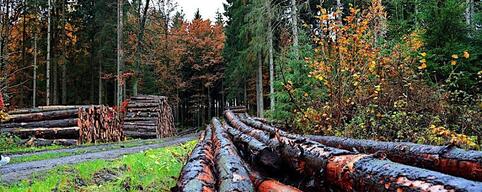

Last year, private forest owners in Finland showed unprecedented interest in forest health fertilisation support, applying for it in record numbers. In total, more than 41,000 hectares of forest were applied for, of which one third was for ash fertilisation on peatland and two thirds for boron fertilisation in mineral forests. This significant level of activity shows that forest owners are increasingly aware of the importance of maintaining healthy forests and are willing to invest in correcting nutrient imbalances.
When looking at regional differences in the demand for health manure support, North Savo stands out clearly. Almost half of all applications for boron fertilisation came from here, reflecting the active approach of the region's landowners to maintaining forest health. There were also significant applications for ash fertilisation on peatland in North Savo, reflecting both the need-based fertilisation solutions and the awareness of the problem of nutrient imbalance.
Other active regions were North Karelia, North Ostrobothnia and South Savo, which also made significant applications for sanitary fertilisers. These regions are traditionally forest-dominated, which may help to explain their activity in promoting forest health. In contrast, Uusimaa, Varsinais-Suomi and Satakunta were significantly lower in terms of applications. In these regions, forestry is less important as a livelihood, which may explain their lower activity in fertiliser applications.
Healthy fertilisation aims at correcting tree growth disturbances due to nutrient imbalance problems. This is particularly important for sustainable forest management, as healthy stands are better able to resist various diseases and pests, as well as the effects of climate change.
Significant potential for increased health fertilisation of coniferous trees in mineral soils has been identified, which can further improve overall soil and stand health. This is an important consideration, as mineral soils cover a large proportion of Finland's forests, and optimising their health could contribute to improving forest productivity and ecosystem services.
Although the article does not directly specify the reasons for the increased demand for fertiliser subsidies, it is evident that forest owners are increasingly aware of the problems caused by nutrient imbalances. This has led to active remediation of growth disturbances, which is necessary to allow trees to maintain their vigour and mature as expected. Nutrient imbalance, especially on mineral soils, is a problem that requires constant attention, and it is therefore understandable that forest owners have applied in record numbers for aid for fertilisation measures.



